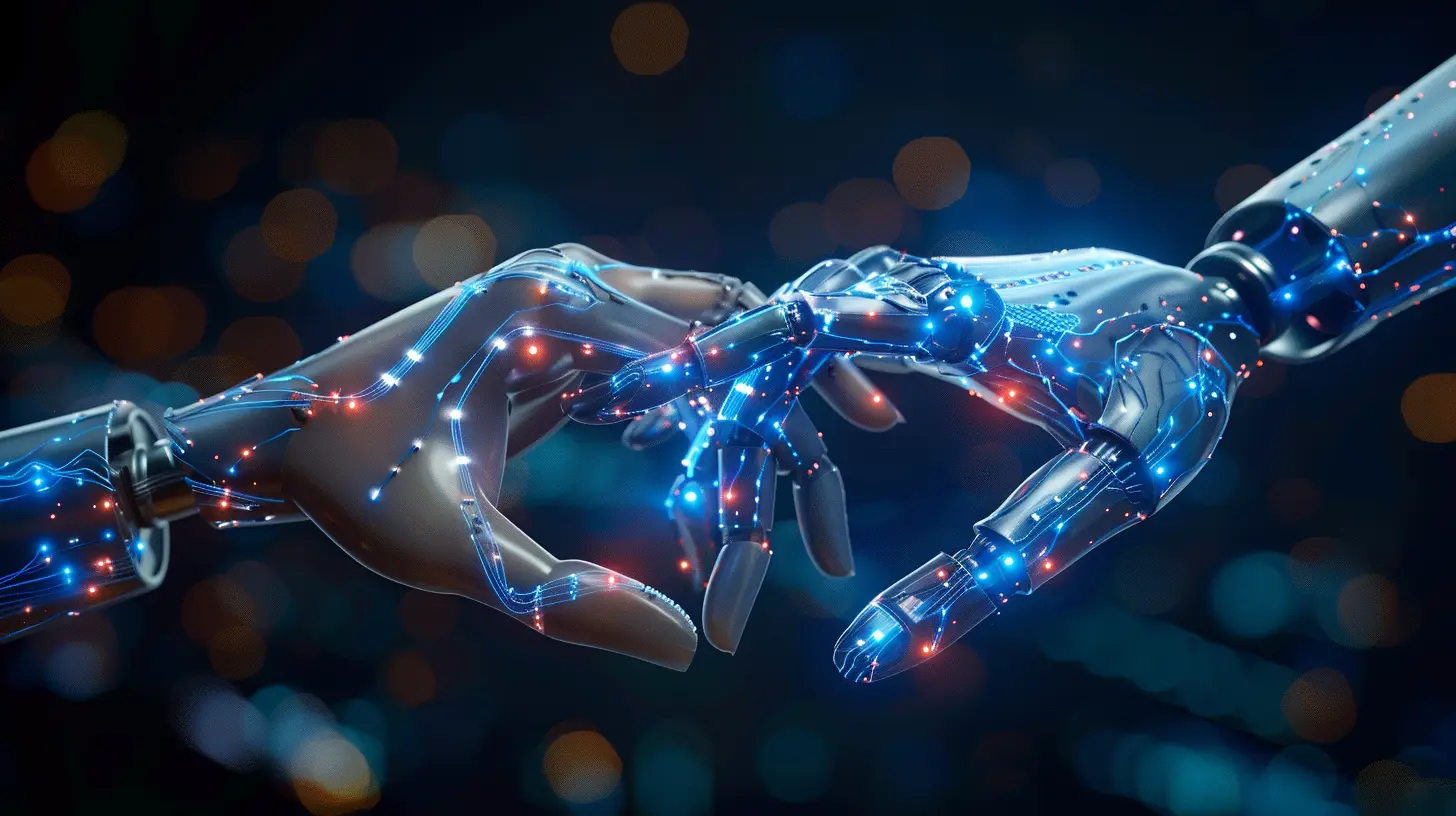Can AI Improve Renewable Energy Solutions?
23 June 2025
The world is shifting towards renewable energy, but there's a big challenge: efficiency. Solar and wind power, while sustainable, are unpredictable. What if we could make them more reliable? That’s where Artificial Intelligence (AI) steps in. AI is revolutionizing many industries, and renewable energy is no exception.
But the big question remains—can AI genuinely improve renewable energy solutions? Let’s dive deep into how AI is shaping the future of clean energy and making it smarter, more efficient, and incredibly reliable. 
✅ The Challenges of Renewable Energy
Before we explore AI’s role, it’s essential to understand the hurdles renewable energy faces.1. Intermittency
One of the biggest drawbacks of solar and wind energy is that they depend on nature. The sun doesn’t always shine, and the wind doesn’t always blow. This makes energy production inconsistent, unlike fossil fuels.2. Energy Storage Issues
To solve intermittency, we need effective energy storage. The problem? Batteries are expensive, and their efficiency is still evolving. We need smarter ways to manage energy demand and storage for better utilization.3. Grid Management Complexity
Unlike fossil fuel plants, renewable energy sources are decentralized. Managing a mix of solar, wind, hydro, and battery power on the grid is complicated. It requires precise forecasting and distribution to avoid wastage or shortages.4. High Initial Costs
Setting up renewable energy systems—like solar farms or wind turbines—requires a significant upfront investment. Making these technologies more efficient would increase their adoption rate.Now, the real question is—how does AI solve these problems? 
🔥 How AI Enhances Renewable Energy Solutions
AI is proving to be a game-changer in optimizing, predicting, and automating renewable energy systems. Let’s look at the key areas where AI is making real impact.1. Smarter Energy Forecasting
AI is exceptional at analyzing massive amounts of data. By leveraging machine learning algorithms, AI can predict weather patterns days in advance.🔹 AI-powered forecasting helps utilities anticipate energy production fluctuations by analyzing historical weather data.
🔹 It enables better grid management, reducing reliance on backup power from non-renewable sources.
🔹 It minimizes energy waste, ensuring that excess power is stored or redirected properly.
For instance, Google’s DeepMind AI helped reduce the unpredictability of wind power by using weather predictions to optimize energy distribution. The result? A 20% improvement in energy efficiency!
2. Optimizing Energy Storage
Remember how storing renewable energy is a major challenge? AI is stepping up by improving battery performance and storage efficiency.🔹 AI algorithms determine the best times to charge and discharge batteries based on demand.
🔹 It helps prevent energy losses by adjusting storage dynamics in real-time.
🔹 AI-driven predictive maintenance ensures batteries last longer and function optimally.
For example, Tesla’s AI-driven Powerwall uses machine learning to adapt energy storage patterns, ensuring homeowners get the most out of their solar installations.
3. Enhancing Smart Grids
A smart grid is an intelligent energy network that self-regulates electricity distribution. AI plays a crucial role in managing these grids efficiently.🔹 AI automatically adjusts energy distribution based on demand and prevents overloading.
🔹 It balances different energy sources (solar, wind, hydro) dynamically for maximum efficiency.
🔹 AI detects potential failures before they happen, reducing the risk of blackouts.
Think of AI as the brain of the power grid—constantly analyzing, predicting, and adjusting to ensure smooth operations.
4. AI-powered Predictive Maintenance
Wind turbines, solar panels, and hydroelectric plants require constant maintenance. AI-driven predictive maintenance can spot issues before they escalate, saving both time and money.🔹 AI algorithms analyze performance data to identify signs of wear and tear.
🔹 Maintenance teams get alerts before a critical failure happens, reducing downtime.
🔹 It extends the lifespan of renewable energy infrastructure, making investments more cost-effective.
For example, GE Renewable Energy uses AI to monitor wind turbines, helping them detect faults early, leading to a 20% reduction in maintenance costs.
5. Boosting Energy Efficiency in Homes and Businesses
AI isn’t just transforming large-scale power grids—it’s also improving energy efficiency at the consumer level.🔹 AI-powered smart thermostats (like Google Nest) learn household energy usage patterns and adjust accordingly.
🔹 AI helps businesses reduce their carbon footprint by optimizing HVAC (Heating, Ventilation, and Air Conditioning) systems.
🔹 Smart meters powered by AI help reduce energy wastage by offering personalized recommendations.
These small changes add up, leading to significant energy savings and lower utility bills. 
⚡ The Future of AI in Renewable Energy
AI is still evolving, but its impact on renewable energy is undeniable. What’s next?1. AI-driven Microgrids
Microgrids are localized renewable energy systems that work independently or with main power grids. AI can efficiently manage these grids, making energy distribution even more sustainable and cost-effective.2. AI-powered Blockchain for Energy Trading
Imagine a future where homeowners with solar panels sell excess energy to their neighbors using AI-powered blockchain systems. This could decentralize power distribution and make renewable energy more accessible.3. Autonomous Solar and Wind Farms
Self-operating wind and solar farms, managed entirely by AI, could increase efficiency, reduce operational costs, and ensure maximum energy output with minimal human intervention.4. AI-driven Nuclear Fusion
Nuclear fusion is often called the "holy grail" of clean energy. AI is already helping scientists accelerate fusion research, pushing us closer to the dream of infinite, clean power.
🚀 Final Thoughts
So, can AI improve renewable energy solutions? Absolutely!🔹 AI enhances efficiency, making renewable energy more reliable and cost-effective.
🔹 It solves critical challenges like energy forecasting, storage optimization, and grid management.
🔹 It pushes us closer to a sustainable, carbon-free future.
AI is not just a tool—it’s a game-changer for renewable energy. As AI technology evolves, we can expect even better energy solutions, driving us toward a cleaner, greener planet.
The future of renewable energy + AI? It’s bright—and it's only just beginning.
all images in this post were generated using AI tools
Category:
Artificial IntelligenceAuthor:

Jerry Graham
Discussion
rate this article
2 comments
Cypher McCollum
This article offers insightful perspectives on the intersection of AI and renewable energy. The potential for AI to optimize efficiency and innovation in this field is both exciting and essential for sustainable progress.
November 19, 2025 at 1:36 PM

Jerry Graham
Thank you for your thoughtful comment! I'm glad you found the insights on AI's role in enhancing renewable energy efficiency and innovation valuable.
Teagan Pruitt
AI has the potential to revolutionize renewable energy by optimizing grid management, predicting energy demand, and enhancing efficiency in energy production. Embracing these innovations could significantly accelerate our transition to sustainable energy sources.
July 7, 2025 at 12:23 PM

Jerry Graham
Absolutely! AI's capabilities in optimizing grid management and predicting demand can greatly enhance renewable energy efficiency, driving the transition to sustainability.


